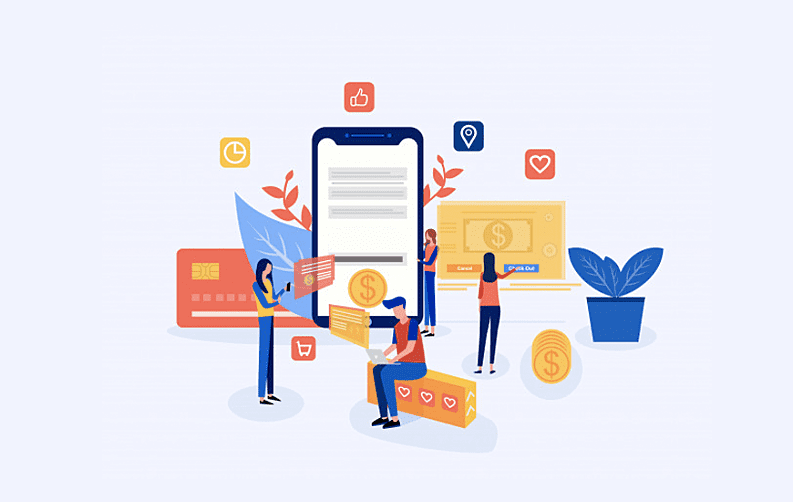
Turning an app idea into reality is just the first step, which is followed by a number of modules, one of which includes app monetization. It involves planning and strategizing on how to make money out of an app.
The app monetization techniques are just not limited to the new app; if an app is already out in the app store, these monetization techniques will work the same.
Before diving into the structure of app monetization strategies, note that there are many ways through which you can generate money via the app, but you need to figure out the best methods that resonate with your app idea.
This complete guide on mobile app monetization techniques will help the mobile app marketing companies to make money and inflate the ROI of the app.
Highlights:
- What is Mobile App Monetization?
- How to Monetize Apps?
- Types of App Monetization Models
- Mobile App Monetization Strategies
- How to Monetize Apps in the Future?
What is Mobile App Monetization?
To put it simply, it’s a way to make money through an app, and why not? To every investment, there should be a return and the same goes for the mobile apps. The most common way of monetizing via apps is to collect user data and sell it to third parties, which usually include the advertisers.
As stated by The Verge, the majority of the apps are free in the app stores, but surprisingly, 98% of the free apps comprise the Google Play revenue. And it has a reason behind it.
A study revealed that 51% of people check mobile apps on their phones one to ten times a day and around 25% of people open apps 11 to 20 times a day. If we calculate the average time a user spends on mobile apps is more than two hours and it’s increasing day by day.

The reason behind this dominance of the mobile apps over tablet and smartphone web can simply be related to the ease of use and access. And this very fact has further thrust the time people spend on their smartphones.
These stats are a hint of an undiscovered market that the mobile app owners, publishers, and developers can delve upon. So, if you are up with an app idea and is planning to release it sooner or later, our mobile app monetization technique will assist you to capitalize on every penny that you may invest in your app.
How to Monetize Apps?
To back up your plan of app monetization, get to know about the target audience. It will help you to understand their behavior and the way they may use the app. And accordingly, you can draw your first line towards your goal of monetizing the app.
At last, you have to think about your users and their journey. Based on how you believe (and eventually learn how) they will utilize the app, where does it make the most sense to monetize it?
It also depends on whether the app is free or paid. A free app can be downloaded and installed without any charges, but a paid app requires the user to shell out some bucks even for downloading it.
To instill more interest, here is the graph on the revenue generated by the app stores, which is expanding at an exponential rate.
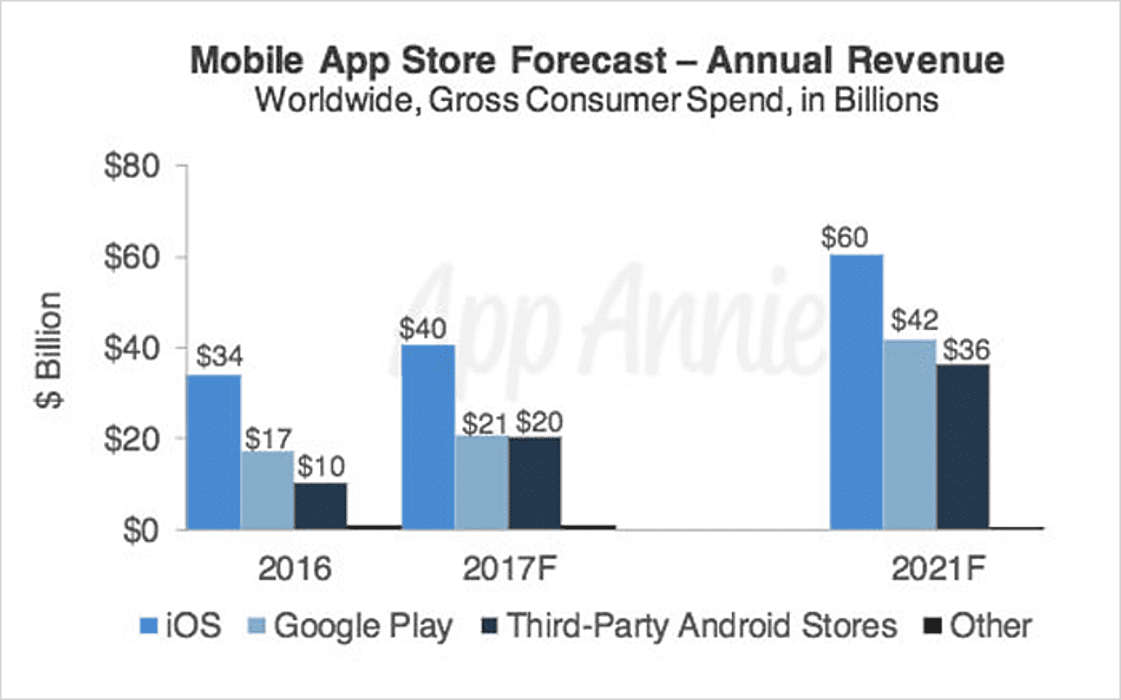
Moving at the same pace, App Annie predicts the app store revenue to reach around $139 billion by 2020 based on an average Compound Annual Growth Rate (CAGR) of 18%.
So, tap on this massive pool of revenue through mobile apps and considerably add on to your annual income.
But remember, every application is different, and this makes it compulsory to choose the best-suited strategy that could monetize the app in the best way possible. It is all about generating revenue for your business, so there is no escaping from opting the right strategy that could drive the revenue.
Check out this article if you are looking forward to opting for an app monetization strategy that could bring success, visibility, and increased revenue for your application.
Type of App Monetization Models
Mainly there are three types of app monetization models that you need to understand before start implementing the strategies to monetize the app. These models will help you in making up your mind for picking the right technique to make the most out of the app.
Following are the three models for app monetization strategies:
1. Effective Cost Per Mile (eCPM) Model
It is the most preferred app monetization model for the publisher because irrespective of the actions taken by the user in a mobile app, it does offer some reward.
It can be calculated using the following formula:
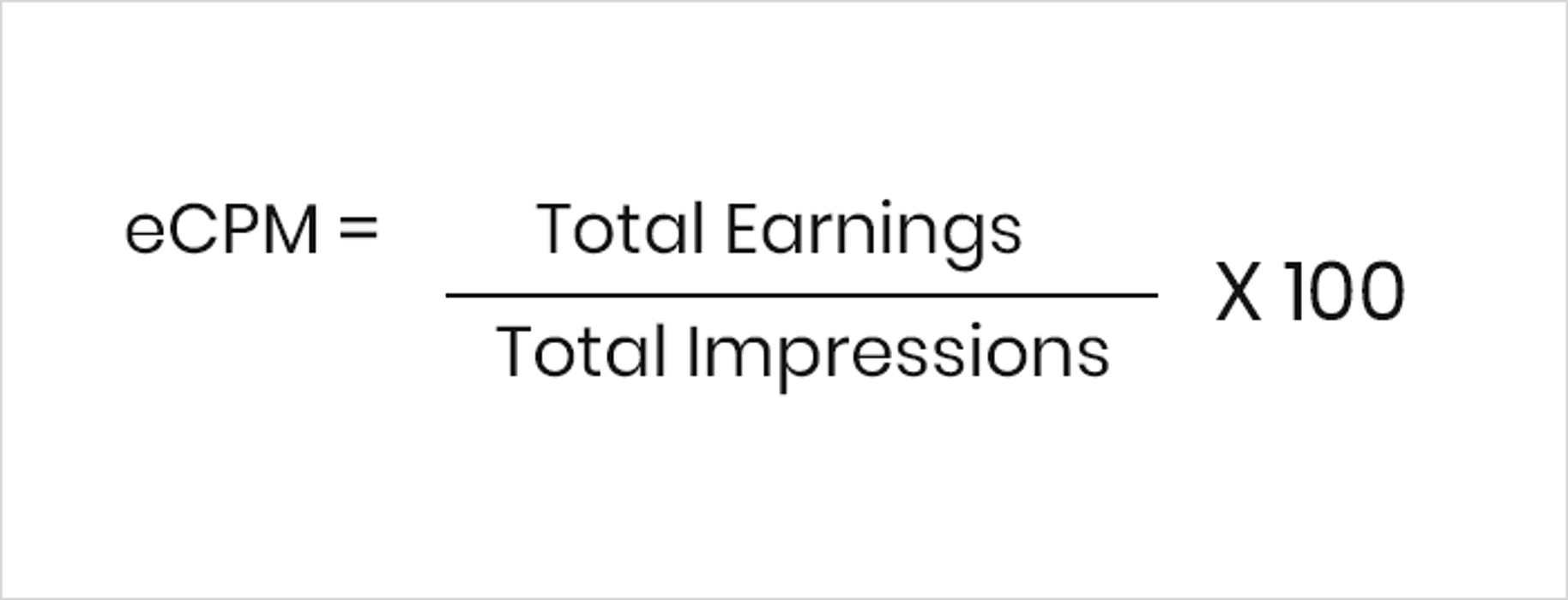
Here, total earning is the revenue generated by the app publisher with a specific ad. And the total impression is the number of clicks that are registered with an ad for an ad campaign duration.
2. Cost Per Click (CPC) Model
Unlike eCPM, the cost per click app monetization model is regulated by a mobile user taking an action on an ad. The best thing about this model is that it attracts a diverse pool of advertisers who aims to deliver better ROI.
At the same time, the chances of its failure are equally high because the model won’t be fruitful if it doesn’t generate high click-through ratio. Also, it’s tough to predict the revenue beforehand.
CPC can be calculated using the following formula:
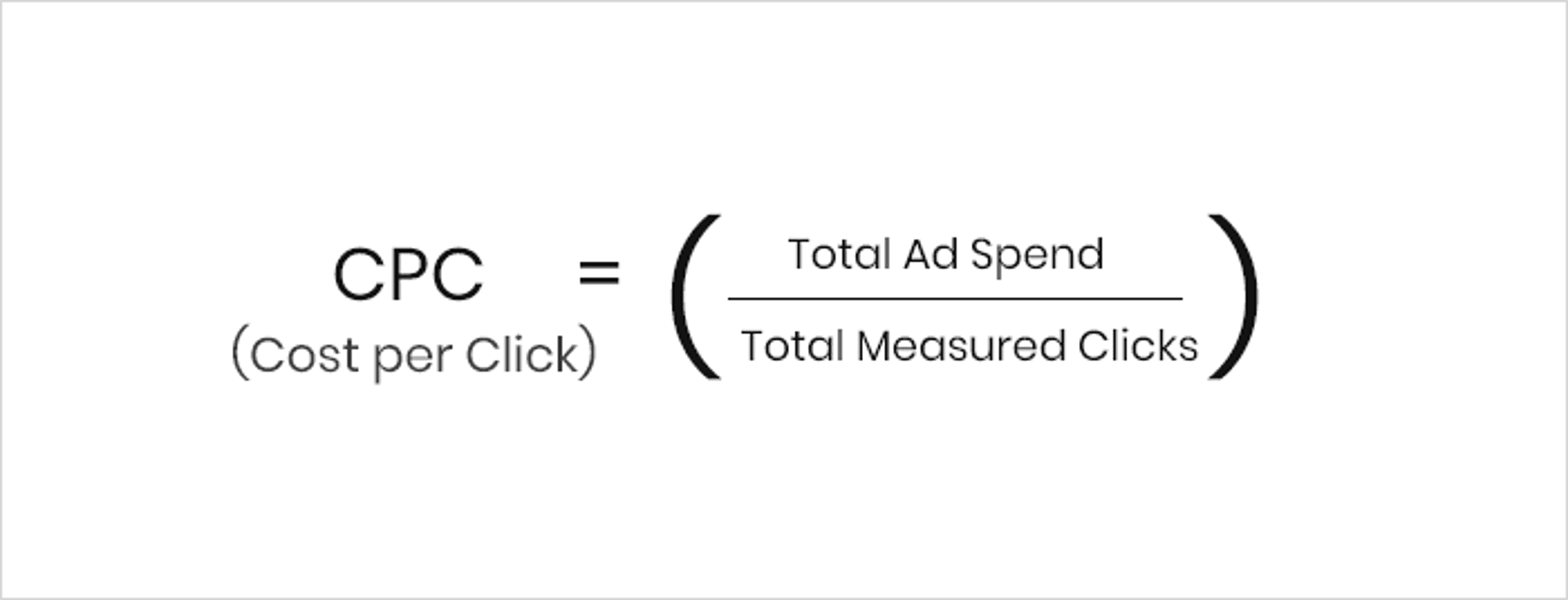
Here the total ad spend is the sum spent on the ad campaign and total measured clicks is the number of clicks recorded over a period.
3. Cost Per Action (CPA) Model
In cost per action model, the app revenue is generated only when a user takes a specific action like clicking on the ad, downloads the app, use it, make in-app purchases, and more. It offers handsome returns on such ads, but it also calls for a variety of fraud that is hard to detect by the publisher.
Best Mobile App Monetization Strategies
This article will take you through the best ways to monetize an app to guide you about the practices that could bring you a handsome return on your app investment.
1. In-App Advertising
In-app advertising is one of the best ways to monetize a mobile app. There are so many latest trends In-app advertising that are shaping the mobile industry And this method is so successful because online advertising is massive and carries the enormous potential to grow further. The statistics from all across the globe depicts a similar scenario.
Take a look at these overflowing numbers:
- 95% of Google’s revenue comes from advertising.
- Global internet advertising revenue is expected to exceed $200 billion.
- US digital advertising has already crossed $83 billion.
These stats clearly depicts the potential that online advertising holds and promises to bring back the core value to your revenue model.
It is essential to work on a plan on how you will display the ads. To be honest, no one likes ads. None of the users wish their app browsing experience gets hammered by a series of ads popping out one after another. But you need to search out a way that could educate users without harming their app viewing experience.

Marketers can include online advertising in a variety of ways and here are some:
- Displaying ads (designed personally or by third-party apps) on mobile or company website.
- You can choose to be specific with your ad network including Facebook, Google, Linkedin or Twitter.
- You can opt for a marketing strategy similar to marketplaces such as eBay or Amazon.
Many types of in-app advertising can be exercised in an app monetization model. Following are some of the best:
- Video Ads: In it, the publisher gets paid when the user watches an in-app ad video. As per eMarketer, an increase of 22.6% is expected in the U.S. mobile video ad spend, which will take it around $15.93 billion
- Offer Walls: Here the user is rewarded with virtual content or additional in-game features for completing an action. It’s highly preferred with an effective cost per mille model.
- Banners: Banners are put on an app screen. It’s constantly displayed throughout when the app is in use. However, it doesn’t generate much traffic.
- Notification Ads: As the name suggests, notification ads are popped up in the notification bar to make the user aware of the ad’s presence.
- Playable Ads: It’s a new type of in-app advertising that allows users to experience the app before downloading it. It cut down on unessential downloads.
2. Generate Leads Through Affiliate Marketing
Another app monetization technique that could bring visibility and the revenue back to your business is affiliate marketing. This kind of marketing depends on how exceptionally another company’s services and products can be promoted by third parties to earn a piece of the profit for selling others’ products. There are so many affiliate programs that users need to try out at least once.
Affiliate marketing can earn you the following advantages:
- A referral for praising others’ services or products.
- A new sales medium for the company.
In this case, both the company and the clients are getting something in return, and that’s why such kind of marketing is equally liked and praised by the users. Basically, affiliate marketing involves earning a commission when users buy a product or service by following a link posted on the website or within an application.
Thus, hosting ads on the website or mobile could bring additional traffic for your application. You might have seen such ad campaigns in many apps. This way, you can generate leads for your app by including interested parties.
Check out the total affiliate marketing spend in the following graph.

Here, potential parties play a prominent role in helping the app gain extended profitability along with the visibility.
3. In-App Purchasing
In-app purchasing or IAP has proved to be a boon for marketers and an excellent way to monetize mobile apps. The US top 50 grossing Android companies believe this model to generate revenue for them. Such a model includes a simple strategy with the apps that come for “free to play” but with a “pay to win” model.
Let’s break this strategy through an example:
- In-app purchasing was exercised by Niantic, the developer of the famous Pokémon GO app.
- The game went viral with over 550 million registered downloads and helped it to make $470 million worldwide. However, the game was never about winning.
- Niantic overhauled its monetization strategy by introducing egg hatching option. As per the option, the users need to buy incubators to hatch the eggs.
- The plan worked for the company and users started buying incubators to hatch as many eggs as they can.
- The game still generates $2 million in daily revenue.
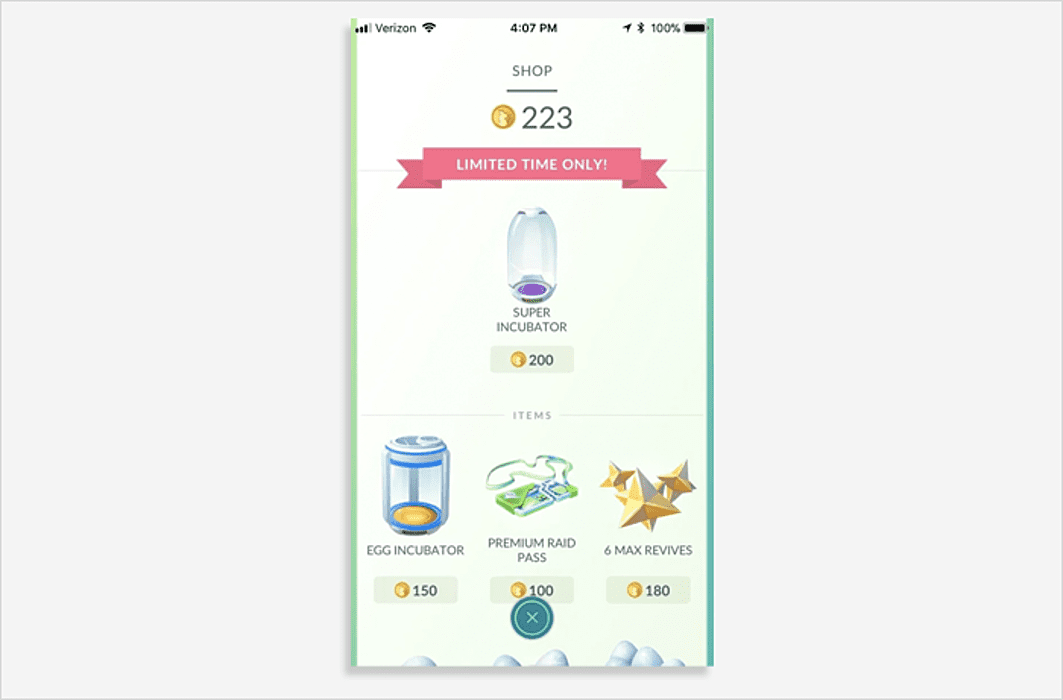
Niantic’s move is a remarkable example of the in-app purchasing strategy. Make your game available for free, add more functionality, and ask your users to pay for it.
4. Subscription
If your application does a specific task regularly for your customers, you have the chance to monetize the mobile app by offering the subscription. The subscription model works best for apps that deliver content.
The marketers can focus on providing the content for a subscription fee that they may be availed free of cost earlier. And thus, to continue receiving the content, users will need to pay a subscription fee.
Here is an excellent example of the subscription-based app monetization model.
- Forbes, the globally-renowned business magazine, opted for a similar strategy to monetize its mobile application.
- The app offers different subscription plan to the users, which they can choose as per their needs.
- These plans are developed strategically with several promotional activities in mind.
- The longer the period you choose, the less you will have to pay. Adversely, choosing shorter subscription plan will cost you more.
This strategy by Forbes paid the company huge dividends and is still going strong.
5. The Freemium Model
The freemium model is another excellent way of collecting revenue from users. Web-based services including digital apps generally follow the model.
In the freemium app approach, the app publishers offer the application for free at first and then ask users to pay for unlocking a more advanced version. The users who are impressed by the app’s functionality and features are sure to pay a little more for it.
The advanced version of the app is always more-feature rich and is made available under the freemium version. Here is an example of Evernote adopting a similar strategy.
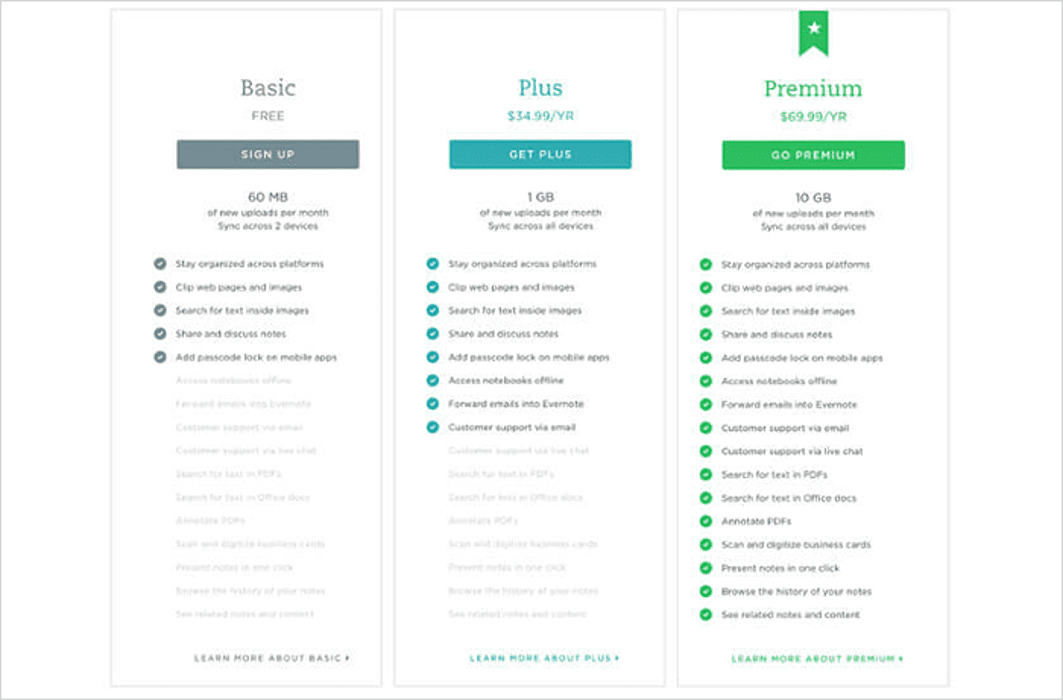
By correctly implementing the freemium model, you can easily generate money through your app.
6. Sponsorship
Getting sponsors for your application is an option to those app marketers who haven’t found success with the ads. The marketers can experiment with this strategy in partnership with advertisers. With this model, the advertisers offer relevant rewards to the customers when they complete any designated action within the application.
Revenue earned is then shared between marketers and advertisers. This model takes ad personalization to the next level altogether.
It further helps enriching customer engagement and monetizes the mobile app by providing real value to them. There are many ways that app marketers opt to earn revenue for their applications.
Here are a few ones:
- Sponsor banner: Such banners are highly visible, which brings visibility to the app and finally, the required revenue.
- Sponsor tweets: To encourage conversation on social media, sponsor tweets are a great medium for advertisers.
- Sponsored pools: It holds the equal capability to bring the traffic right at the website.
7. Paid Download
With paid downloads, users pay once for downloading the application. It is one of the distinct ways for generating revenue by selling your application in the app store.
To monetize your app, it is essential to showcase your app as something exceptional and that can be achieved by embedding brand-new features and functionalities. The app will only get extended visibility if it provides something much more valuable to the users that other apps fail to provide.
To monetize the application, this model proves to be a challenging one, as it may become a difficult job for the users to convince them on why they should pay for a service they have not used yet, especially when there are so many apps available free of cost.
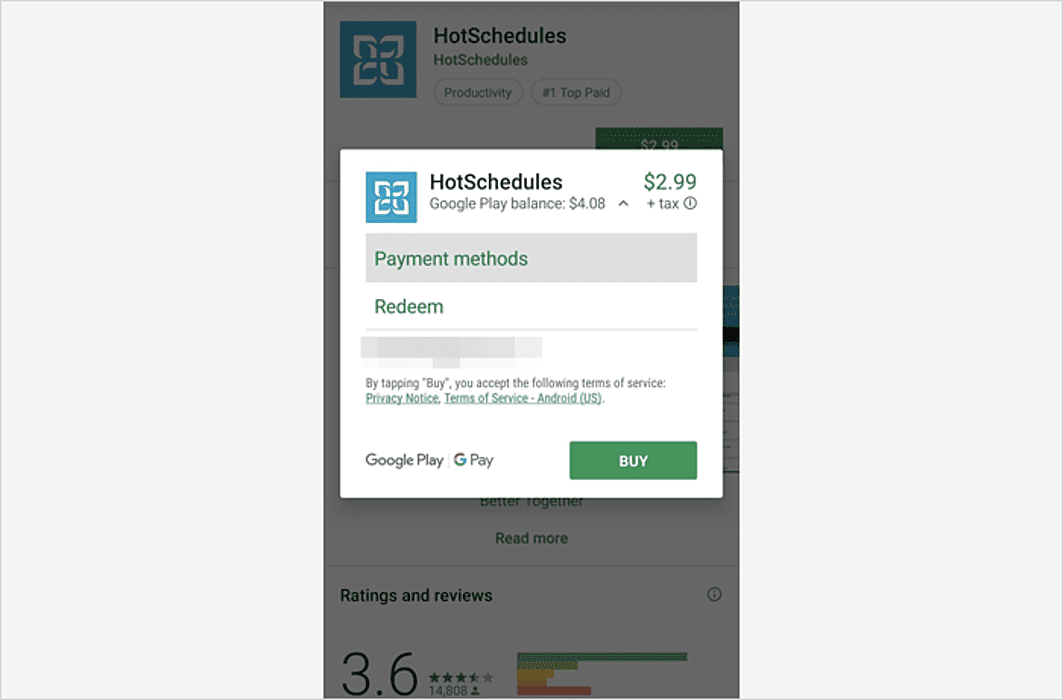
When opting for paid downloads, marketers need to re-think on how to monetize apps because:
- Both the Google Play Store & Apple App Store take 30% of the price from the app publisher.
- Putting a price on the app creates a barrier for the people to download.
- The app may fail to meet the expectations of the users resulting in reduced download numbers.
- Paid download model is not suitable for every app.
Choose paid download model for your app, when:
- The app offers value over free apps.
- You can do a robust app marketing.
- You want to tie revenue directly to the downloads.
- You are marketing the app under a brand name.
Many of the startups opt for a premium model by guaranteeing exceptional app features. You could also opt for a similar strategy.
8. Software-as-a-Service (SaaS)
Software-as-a-service (SaaS) can prove to be an attractive option for startups provided their services are designed to suit the subscription approach. The approach is also helpful to lock the clients in the long-term payment commitments, which contributes towards a valuable lifetime relationship with the clients.
Opting for SaaS (if it suits your business) can help increase the revenue along with assisting the marketers in securing income stream on which they can easily rely upon.
SaaS has many approaches that a marketer can opt for bringing revenue to the business.
The most popular options are:
- Pay as You go: Here, the marketers charge users as per the individual plan and is famous since the early days. Companies like Amazon still rely on such programs to generate revenue. However, the plan comes with some downsides too. Besides the fact of how much services any particular consumers enjoy, it is quite challenging to sustain the predictable revenue.
- Tiered Pricing: In this model, the marketer divides the services into different levels based on the usage amount that a particular customer pays. It is one of the most common models used within SaaS. The best benefit of such a model is it clearly shows the users their specific needs.
9. White Labeling
White labeling is the practice of selling a product or service under the brand name of a company other than it was developed. In such a business model, a company produces a product and then sells to another one for further marketing. To the users, the product appears under the brand name it is marketed by.
The model generally suits the mobile app development ecosystem the best. For such businesses, the model is proved to offer certain benefits. In case an app is developed with proper coding for providing a very positive user experience, it can be sold to other companies having an excellent marketing model to take the app finally to the users.
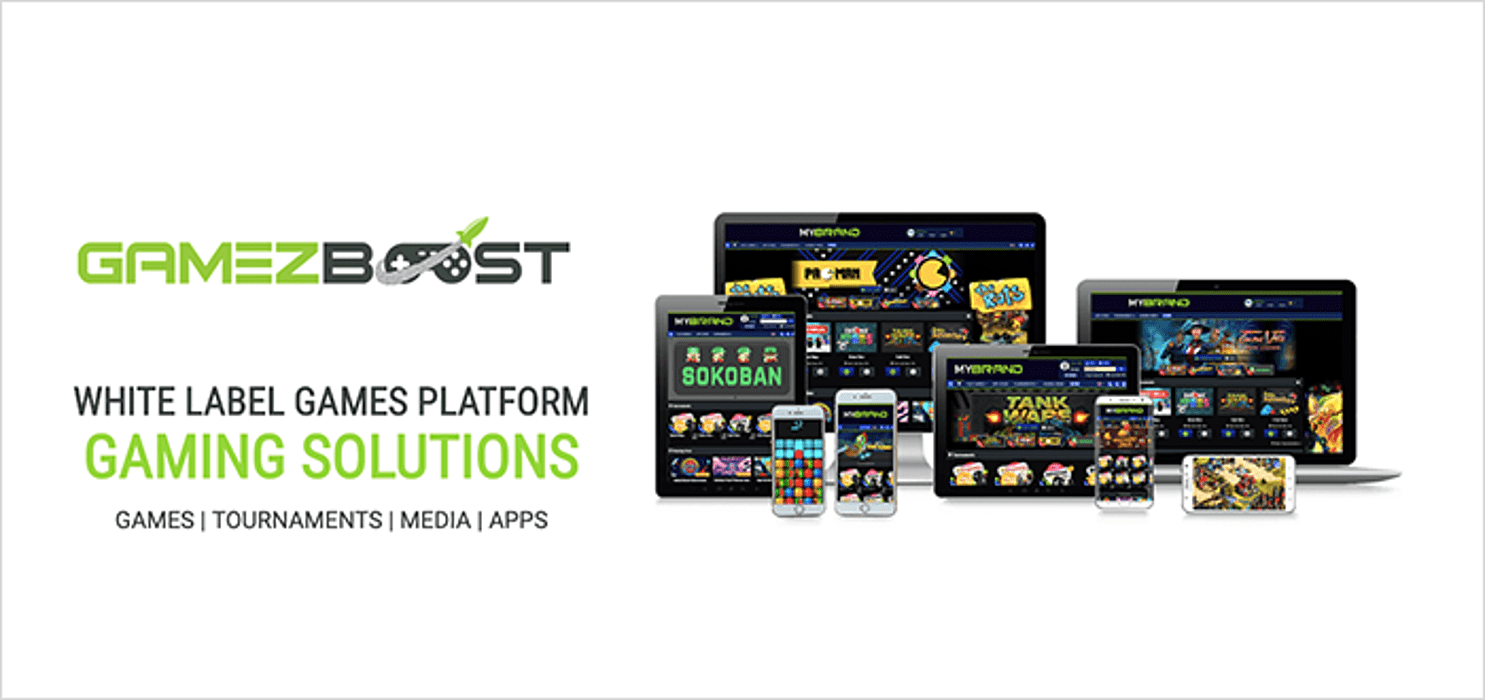
Several brands prefer getting a ready-to-use application to market them under their brand name. This way, another company doesn’t need to create a product from scratch, which saves enormous development cost.
In such a model, both sides can work on the areas they hold expertise into. Thus, the development partner focuses on the actual product development while another company takes care of the promotion, distribution, and advertising as well. GameZBoost is one excellent example that practices a similar strategy.
10. Email Listing
You might wonder about the role of email in the app promotions, which can help you generate revenue through an app. But trust us, it is an excellent medium to get more engagement from your customers.
The fact that makes the email an effective way of app monetization strategy is that people don’t change their email addresses on a regular basis and it becomes easy to run email marketing campaigns.
App promotional emails is an ideal way to make people aware of the app, as nowadays, everyone communicates through email, and chances remain high that the email sent will be read.
As per a report by Wiselytics, the total life of post on the various medium are:
- Facebook post - A few hours.
- Twitter - Just over an hour.
- Email - A lifespan of 12 days.
You can garner email addresses by attaching an email subscription form to your app.

The email strategy is bound to work exceptionally well when some promotions or deals can help the user to get some benefits while downloading the app. This way, the chances of success increase manifolds.
11. SMS Marketing
SMS marketing may sound an old-school technique, but you can’t overlook it to monetize your app. Sometimes, well-proven strategies perform far better than the new ones. Regarding SMS marketing, it sits atop all other advertising techniques because it doesn’t require any special arrangements to function.
Today, everyone has a smartphone, and SMSs can be exchanged at any moment. The only requirement that the app publisher needs to fulfill is to grab the databases of smartphone users contacts, which is readily available in the market.
The next step is to create a compelling and striking content that should invoke enough for that the people open it up and read the text. Try to include a bit of humor and keep the tone of the message polite.
12. Crowdfunding
The last mobile app marketing and monetization strategy is crowdfunding. It’s a process where a project is funded publicly over the internet. The one thing that makes this method a bit dicey is the fact that you can’t be sure of the amount the public will fund for your project.
As per startups.com, by 2025, the expected crowdfunding is to reach by $300 billion. The study also claimed that the success rate of a crowdfunding campaign stands to be around 50% and interestingly, about 78% of crowdfunding campaigns exceed their goal.
Here are some of the best-known crowdfunding platforms that can generate funds for your app:
- Kickstarter
- IndieGoGo
- GoFundMe
- Patreon
- RocketHub
- Razoo

As stated above, the crowdfunding channel is highly unpredictable and the revenue generation can’t be stable over it. Therefore, this platform can be considered as a channel to draw some extra income for the app.
How to Monetize Apps in the Future?
Mobile apps are here to stay for long and with an expected mobile ad spend expected to hit $70 billion this year, the buzz has become louder.
All the mobile app monetization strategies mentioned in this article may not suit every app, and for that, you can keep experimenting till the time your app revenue doesn’t swell exponentially.
With time, many of these ways to monetize an app can fade away. For instance, ad blocker in place, monetizing with ads might not be a good idea in a longer run. But if native apps survive for long, then it won’t affect it, as ad blockers don’t work within native apps.
But then the ever-increasing competition will also hamper the influence of mobile app marketing and monetization ways. It may also force the user to turn a blind eye towards the in-app ads, as the place gets crowded.
David Ogilvy, an advertising tycoon and founder of Ogilvy & Mather, once said,
“I don’t know the rules of grammar… If you’re trying to persuade people to do something, or buy something, it seems to me you should use their language, the language they use every day, the language in which they think. We try to write in the vernacular.”
It explicitly unfolds the manner we connect with the people should evolve and should be transformed in a way that suits the audience, rather than following the herd of sheep.
The Upshot
These were the best mobile app monetization methods you could opt for in 2019. However, this is just the tip of the iceberg. Every practice explained here has its advantage to suit a particular kind of app marketing strategy, and thus, the trick lies in choosing the best method depending on the type of app business you have.
One more thing to keep in mind before employing the best monetization for apps is to understand that there should be separate planning for deploying the android app monetization strategies and iOS app monetization strategies.
It is crucial to figure out the benefits of each of the methods listed above to make the best profit out of these app monetization methodologies. The task of generation revenue via apps has become more comfortable with the assistance of mobile ad providers like Google Ad Manager and Google’s AdMob.















